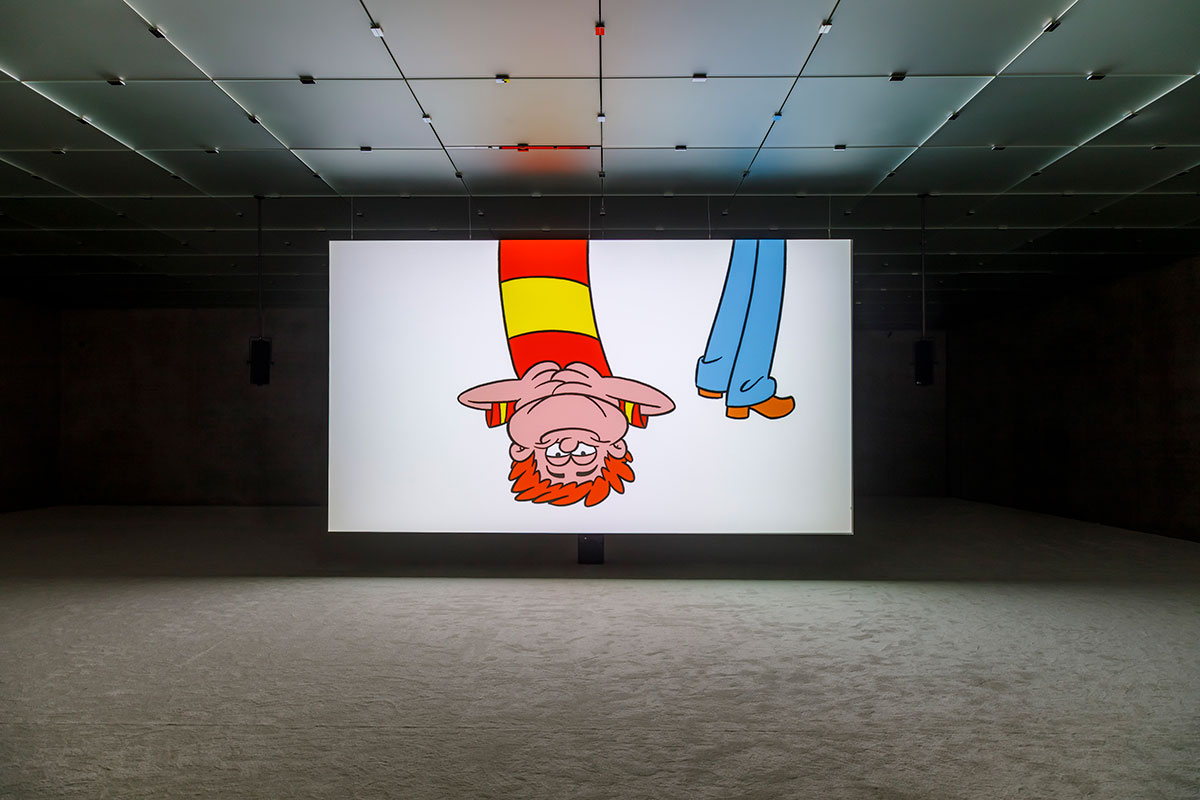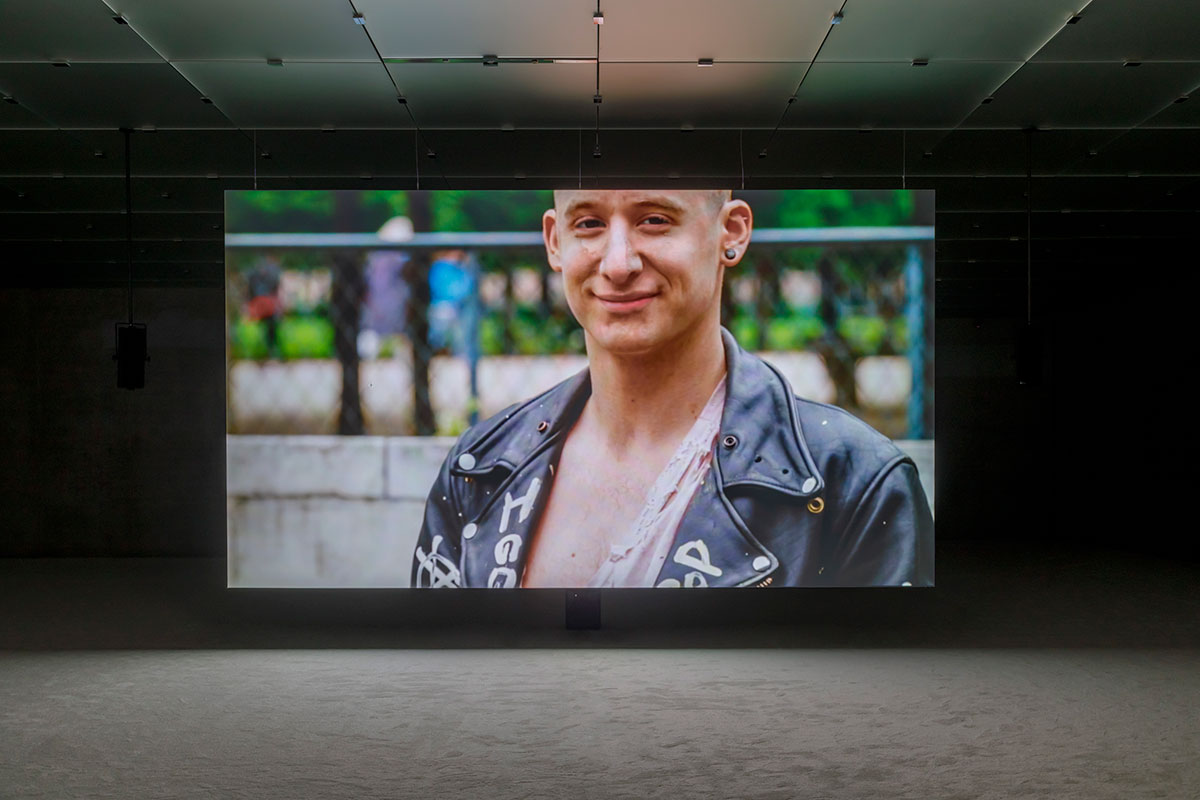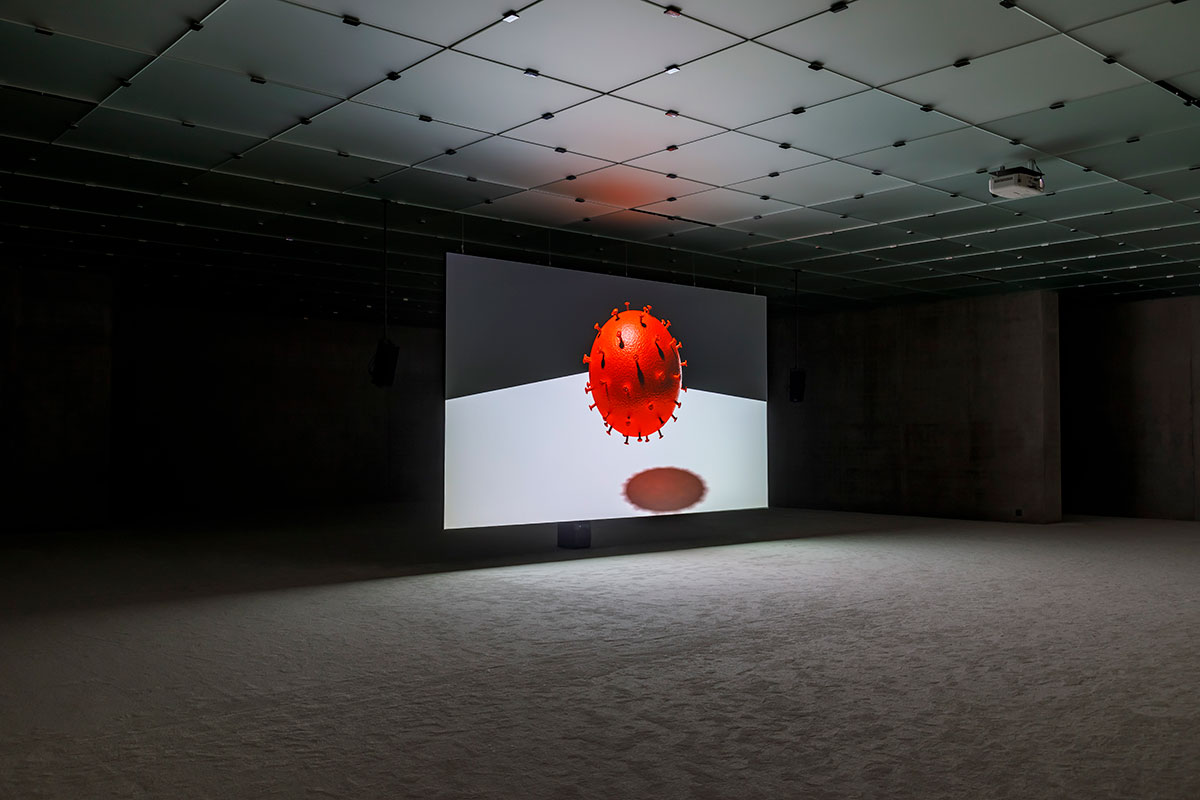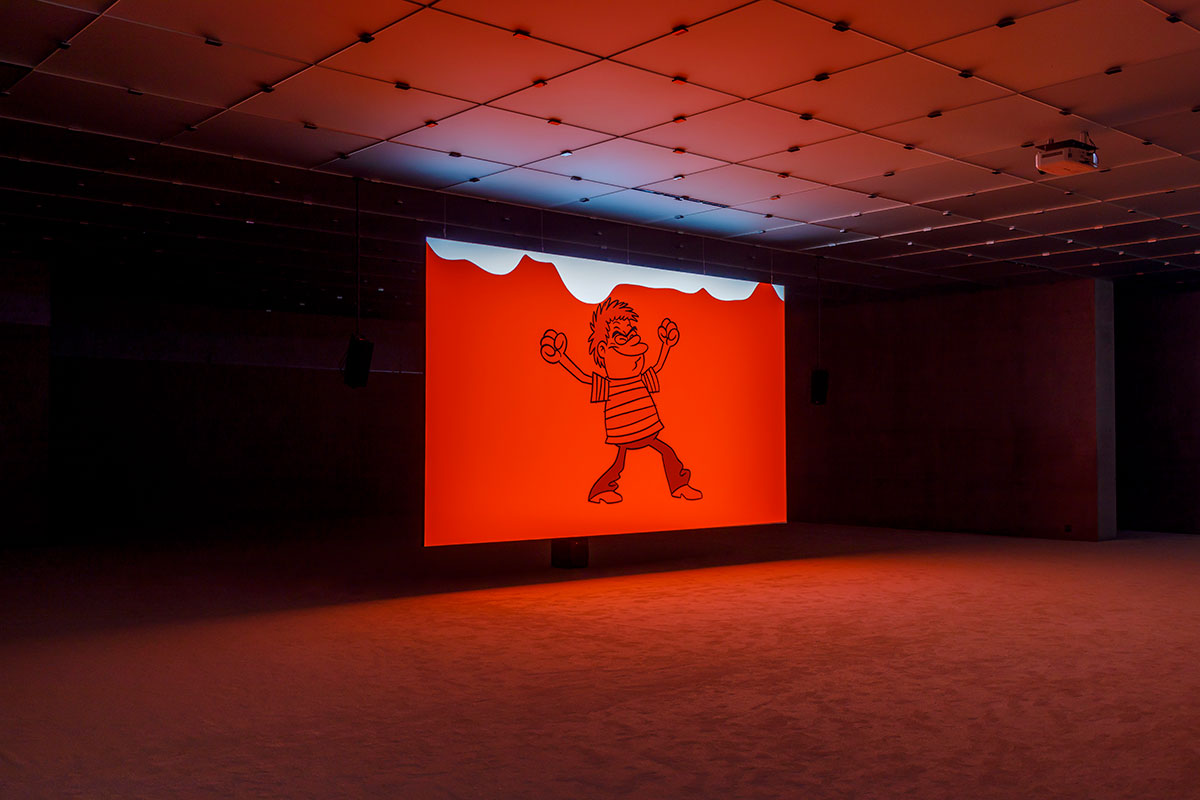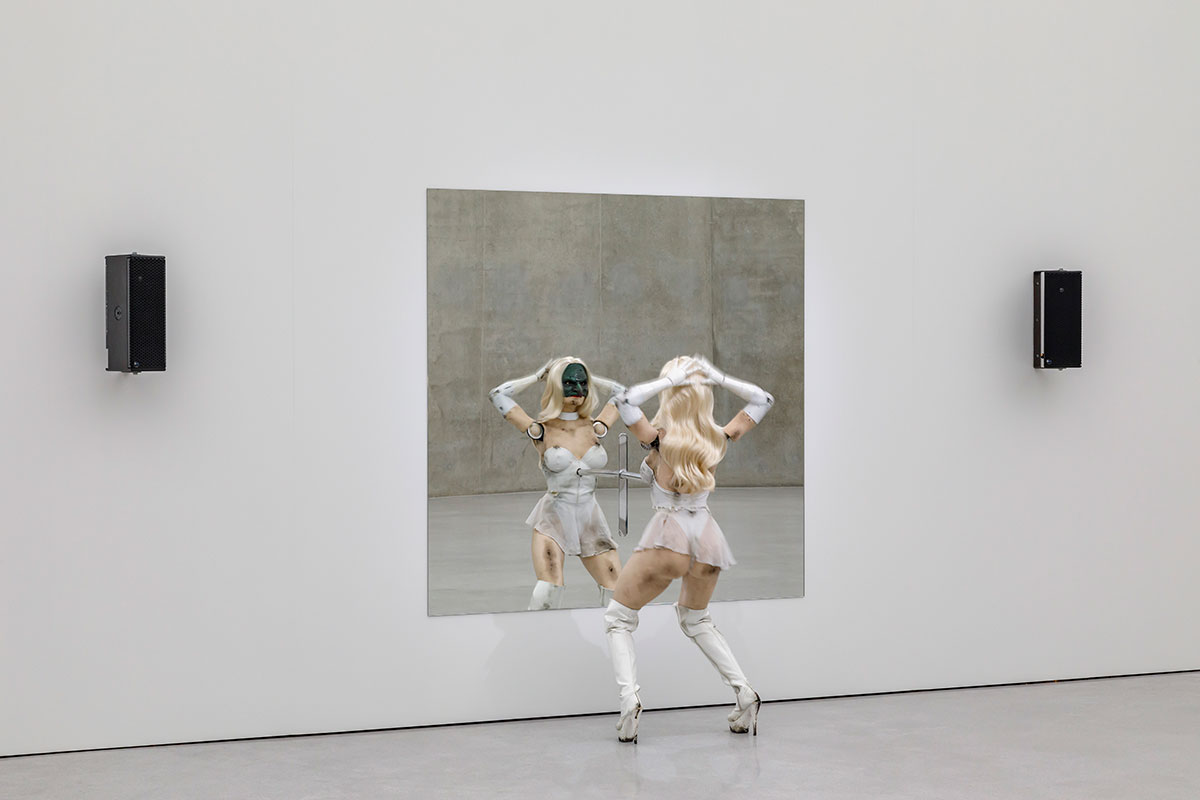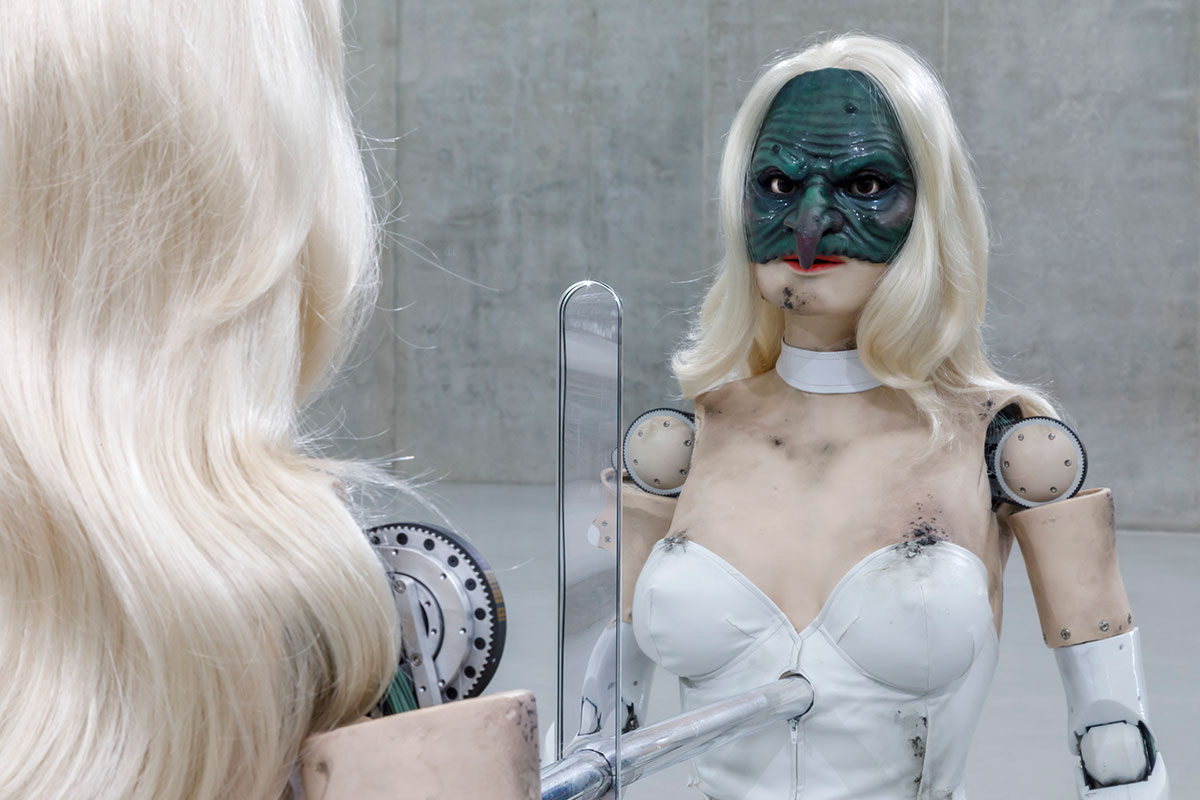PRESENTATION: Jordan Wolfson
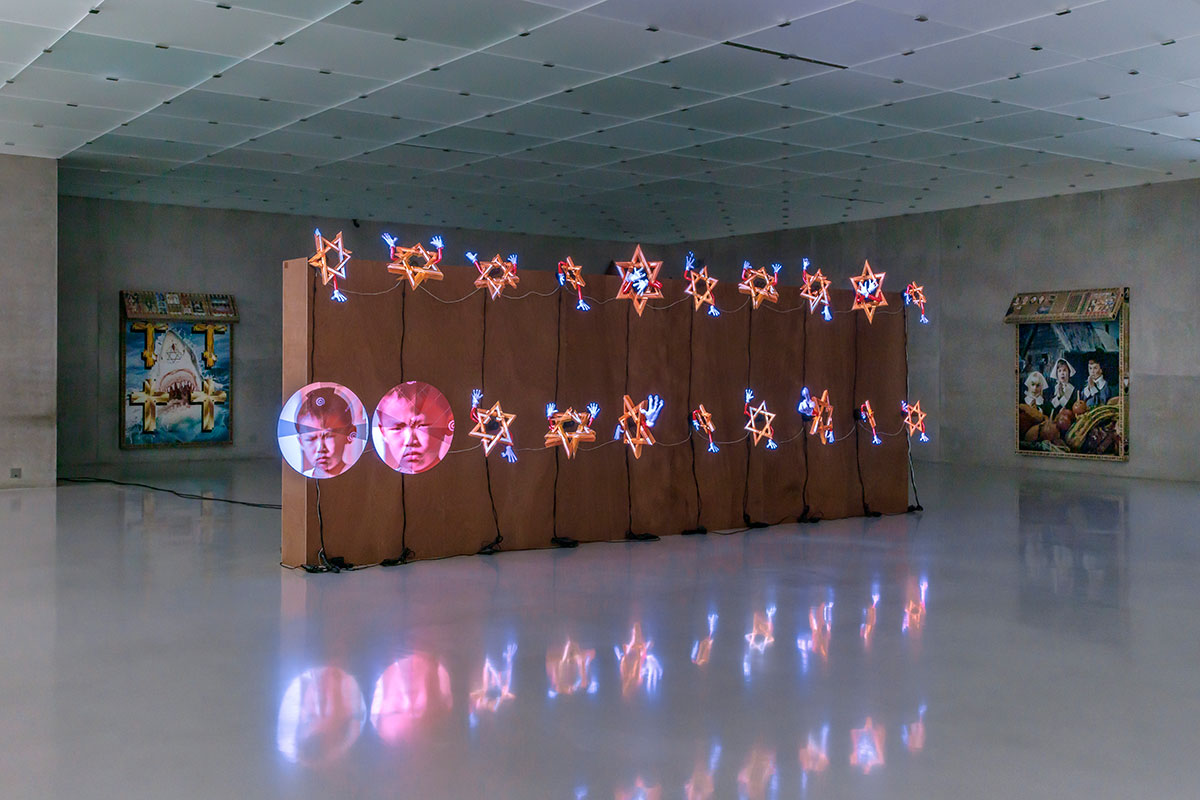 Jordan Wolfson is known for his provocative work in a range of mediums, including sculpture, installation, video, photography, digital animation, and performance. Filtering the languages of online and broadcast media through digital and mechanical technologies and employing an array of invented characters, he crafts enigmatic narratives that explore uncomfortable social and existential topics. Wolfson has characterized this collage-like methodology as being derived from and focused on the “byproduct(s) of culture,” but he is more concerned with the psychological power of the uncanny and the confrontational than with any direct critique.
Jordan Wolfson is known for his provocative work in a range of mediums, including sculpture, installation, video, photography, digital animation, and performance. Filtering the languages of online and broadcast media through digital and mechanical technologies and employing an array of invented characters, he crafts enigmatic narratives that explore uncomfortable social and existential topics. Wolfson has characterized this collage-like methodology as being derived from and focused on the “byproduct(s) of culture,” but he is more concerned with the psychological power of the uncanny and the confrontational than with any direct critique.
By Dimitris Lempesis
Photo: Kunsthaus Bregenz Archive

In one of Jordan Wolfson’s works in his solo exhibition in Kunsthaus Bregenz, visitors find themselves in a virtual world, where skyscrapers soar beside them, as cars and yellow taxis pass along one of New York’s grand avenues. Street noise reverberates; it is everyday life in the big city. The 3D video is compelling alone in its uncanny proximity to reality. But a monstrous act begins to quickly unfold in the immediate vicinity, a man is beating another to death with a baseball bat. The viewers become witnesses, they see the victim ultimately bleed to death, implicating themselves by looking. Virtual reality, VR, becomes RV, “Real Violence,” (2017). “House with Face” (2017), epitomizes the artist’s ability to create familiar yet disquieting visual forms. It depicts a quaint log cabin whose roof appears as a distorted, grimacing, witch-like face with metal rings mounted on the forehead, cheeks, and chin, projecting from the figure’s head like piercings. “Artists Friends Racists”, an expansive visual collage from 2021, the year of the pandemic, is being presented on the ground floor of KUB. Twenty holographic fans mounted on a wall, revolving at high speed, create the illusion of imagery hovering in space, rotating, pulsating, and splintering. Emojis, Stars of David, and the arms of a cartoon character mingle with a selection of portraits of renowned and historic artists as well as images of Wolfson himself. Contrasting with the projections that show Wolfson’s admiration and appreciation of his friends and fellow artists are those displaying his disdain for repressive figures of authority and for the subtle and overt ways in which racism is embedded within modern white identity. Illustrating the point, visuals in the work display Dutch people in blackface celebrating Zwarte Piet and white people looking self-satisfied in the mirror, seemingly believing that they’re guiltless. Employing scenes from the children’s TV series “Sesame Street” and imagery of September 11, 2001, Wolfson juxtaposes high and low, harmless and devastating, cute and brutal. In between, the numbers of the fans appear, like a secret countdown or a code that we are unable to decipher. The video work “Raspberry Poser”, 2012, is being screened on the first floor. The projection features a furious cartoon character, a condom roaming the streets of Soho, and an anarchy symbol that rapidly mutates into a heart and signs for the genders. Wolfson works through our fear of AIDS. Beads that look like candy or blood cells trickle out of the condom. Finally, the spiked sphere of a virus emerges, a shape we are now familiar with due to the pandemic. In this work, Jordan Wolfson confronts both sexual identity and inner conflicts, but provides no answers. Instead, Wolfson himself appears as a skinhead with a shaved head, roaming the parks of Paris. “Raspberry” Poser forgoes any irrevocable reality or clear moral assertions, and yet the video is still able to pose existential questions concerning love, life, desire, and death.
Collages made on wood or metal alloy supports are on display on the second floor, which Wolfson dubs “Wall Objects”. They are covered with photographic imagery and stickers, ropes or chains dangle down, many featuring symmetrically drilled holes. Some of the collages are reminiscent of workbenches, others of instruments of torture. Some are in the shape of a Star of David. Virtual and imaginary worlds intermesh in the physicosed with imagery signifying emotional frigidity, the menacing, and vengeful, as the artist says “The wall objects are about witnessing still imagery sculpturally. The early works were intended to break taboos and cross social and moral boundaries. Later, the artworks got more personal, reflecting back on my own identity and neuroses. The JFK Jr. series is partly about a failed relationship I had and partly about my own Semitism. JFK Jr. was the ultimate insider and I wanted to turn him into Groucho Marx, who said, ‘I refuse to join any club that would have me as a member.’ I was thinking JFK Jr. could have walked into any club he wanted and not been stopped at the door. I also thought that when you looked at JFK Jr. it was a way of talking about Donald Trump without looking at him. It was like looking into one corner to see the opposite corner. The sticker, ‘Describing how a dog was slaughtered,’ is about the destruction and marring of innocence and compassion. The religious works are about me seeking healing. I researched countless therapeutic and spiritual modalities and one thing they all had in common was the idea of surrendering – to yourself, and maybe even to God.” On the upper floor, a robotic figure dances in front of a mirror. “Female Figure” (2014), sports knee-length boots, a white negligee, and blonde wig. Black, evil-looking eyes peer out from under a plague doctor’s green mask. Wolfson has translated video technology into sculpture. The go-go girl undulates her arms in an amazingly graceful manner, her joints creaking to the rhythms of popular music. Wolfson voices the grimy figure that is intriguingly both repulsive and attractive: “My mother is dead. My father is dead. I’m gay.” An uneasy tension develops, not least because the sculpture makes eye contact with the viewer through the mirror. The red hair, freckles, and boyish look of “Colored sculpture” (2016) draw associations to such literary and pop cultural characters as Huckleberry Finn, the pioneer in children’s television programming Howdy Doody and Alfred E. Neuman from Mad magazine. Highly polished in appearance, the work is suspended with heavy chains from a large mechanized gantry, which is programmed to choreograph its movements. The sheer physicality of the installation, which fills the entire gallery space and includes the work being hoisted and thrown forcefully to the ground, viscerally blurs the distinction between figuration and abstraction, while furthering the formal and narrative possibilities of sculpture. The sculpture’s eyes employ facial recognition technology to track spectators’ gazes and movements, thereby adding another layer of interactive corporeality to the work. Using fiber optics, its eyes also intermittently display a range of imagery and video footage, including the artist’s own animations and filmed footage, and other found visual material, all of which seem to mine the subconscious preoccupations and desires of our society and consumer culture. The accompanying soundtrack further underscores the complex tensions and distortions that the artist establishes between reality and artificiality, subject and object, meaning and sense.
Photo: Jordan Wolfson, ARTISTS FRIENDS RACISTS, 2020, Installation view, second floor Kunsthaus Bregenz, 2022, Photo: Markus Tretter, Courtesy Jordan Wolfson Studio and The George Economou Collection, © Jordan Wolfson, Kunsthaus Bregenz
Info: Kunsthaus Bregenz, Karl-Tizian-Platz, Bregenz, Austria, Duration: 16/7-9/10/2022, Days & Hours: Tue-Wed & Fri-Sun 10:00-18:00, Thu 10:00-20:00, www.kunsthaus-bregenz.at/

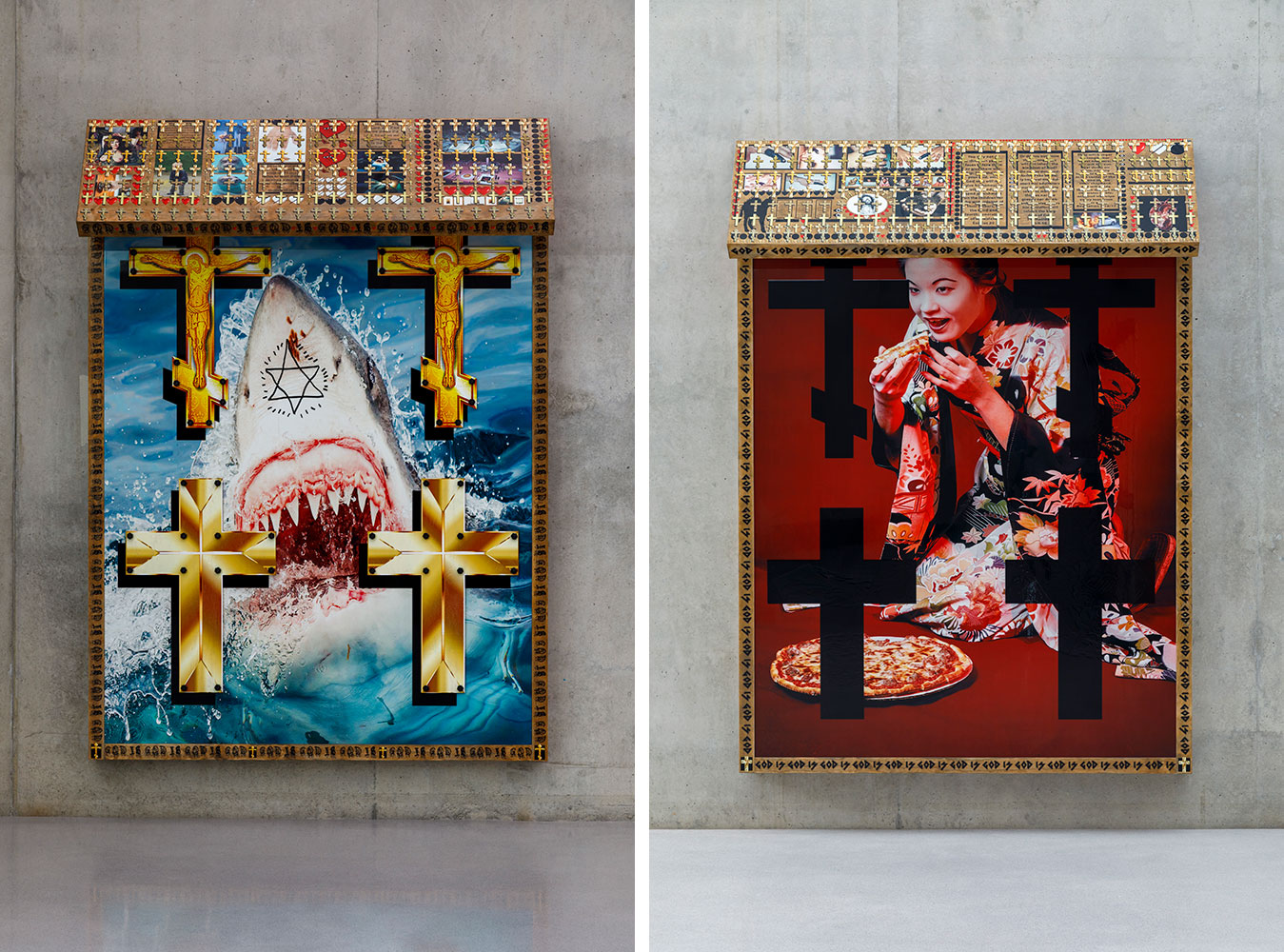
Right: Jordan Wolfson, Untitled, 2022, Installation view, second floor Kunsthaus Bregenz, 2022, Photo: Markus Tretter, Courtesy Jordan Wolfson Studio and The George Economou Collection, © Jordan Wolfson, Kunsthaus Bregenz
